pneumatic tube
description: a system that propels cylindrical containers through a network of tubes using compressed air or vacuum.
80 results
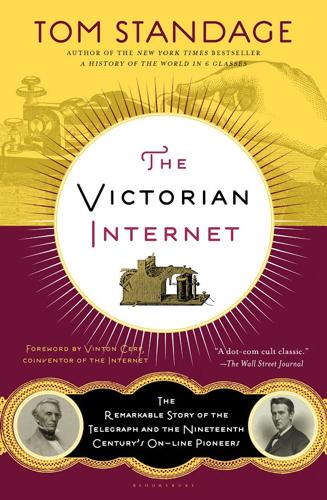
Victorian Internet
by
Tom Standage
Published 1 Jan 1998
ALTHOUGH THEY WERE ORIGINALLY intended to move messages from one telegraph office to another, pneumatic tube systems were soon being used to move messages around within major telegraph offices. Each of these offices was a vast information processing center—a hive of activity surrounded by a cat's cradle of telegraph wires, filled with pneumatic tubes, and staffed by hundreds of people whose sole purpose was to receive messages, figure out where to send them, and dispatch them accordingly. The layout of a major telegraph office was carefully organized to make the flow of information as efficient as possible. Typically, pneumatic tube and telegraph links to offices within the same city would be grouped on one floor of the building, and telegraph wires carrying messages to and from distant towns and cities would be located on another floor.
…
International connections, if any, were also grouped. Incoming messages arriving by wire or by tube were taken to sorting tables on each floor and forwarded as appropriate over the building's internal pneumatic tube system for retransmission. In 1875, the Central Telegraph Office in London, for example, housed 450 telegraph instruments on three floors, linked by sixty-eight internal pneumatic tubes. The main office in New York, at 195 Broadway, had pneumatic tubes linking its floors but also employed "check-girls" to deliver messages within its vast operating rooms. Major telegraph offices also had a pressroom, a doctor's office, a maintenance workshop, separate male and female dining rooms, a vast collection of batteries in the basement to provide electrical power for the telegraphic instruments, and steam engines to power the pneumatic tubes.
…
Major telegraph offices also had a pressroom, a doctor's office, a maintenance workshop, separate male and female dining rooms, a vast collection of batteries in the basement to provide electrical power for the telegraphic instruments, and steam engines to power the pneumatic tubes. Operators working in shifts ensured that the whole system operated around the clock. Consider, for example, the path of a message from Clerkenwell in London to Birmingham. After being handed in at the Clerkenwell Office, the telegraph form would be forwarded to the Central Telegraph Office by pneumatic tube, where it would arrive on the "Metropolitan" floor handling messages to and from addresses within London. On the sorting table it would be identified as a message requiring retransmission to another city and would be passed by internal pneumatic tube to the "Provincial" floor for transmission to Birmingham by intercity telegraph.

The Long History of the Future: Why Tomorrow's Technology Still Isn't Here
by
Nicole Kobie
Published 3 Jul 2024
Social Studies of Science 22, no. 2 (1992): 231–43. http://www.jstor.org/stable/285614. CBC News. ‘High-speed rail between Calgary, Edmonton not feasible, finds committee.’ May 23, 2014. https://biturl.top/q2i2mm Clayton, Howard Francis. The Atmospheric Railways. Lichfield, 1966. Connor, J. E. ‘The Crystal Palace Pneumatic Tube Railway: Part 1.’ London Railway Record, October 2003. Connor, J. E. ‘The Crystal Palace Pneumatic Tube Railway: Part 2.’ London Railway Record, January 2004. Daley, Robert. ‘Alfred Ely Beach And His Wonderful Pneumatic Underground Railway.’ American Heritage, June 1961. https://biturl.top/fEr22u ‘Dreadful Explosion – loss of four lives.’ Freeman’s Journal, March 8, 1845.
…
He followed up that pamphlet with a selection of alternative designs: first, a pipe laid between rail tracks that pull the carts along the rails; second, a similar scheme on roads to pull what we would now call cars (they were yet to be invented); and third, a tube with a small carriage for goods and a larger carriage for passengers. Medhurst never built his system. But pneumatic tubes to shuttle packages and messages did come to life a few decades later. Beginning in the 1850s, two entrepreneurial Brits – Thomas Webster Rammell and Josiah Latimer Clark – constructed a version beneath London, selling access to the Post Office so that pneumatic shuttles could carry mailbags.
…
They also carried a few courageous-or-bonkers people (we’ll get to that project later). Pneumatic systems to carry small parcels or letters were also installed across dozens of other cities around the world. The largest covered 450km (280 miles) in Paris and operated until 1984, allowing a message to traverse the French capital in less than two hours. In New York, a pneumatic tube system was carrying 95,000 letters every day by 1897. It was so quick and easy that people could send missives back and forth throughout the day, like an analogue version of text messaging: a husband could alert his wife that the boss was coming to dinner, and she could reply asking about his preferred meal, and receive the reply, all before lunch.
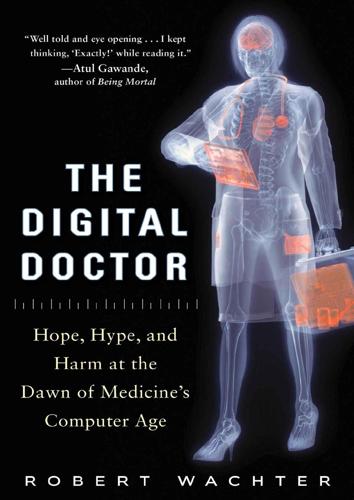
The Digital Doctor: Hope, Hype, and Harm at the Dawn of Medicine’s Computer Age
by
Robert Wachter
Published 7 Apr 2015
The practice of medicine is all about information, from making a diagnosis to picking the best medication to offering an accurate prognosis. Unsurprisingly, Mayo has been home to many of the critical innovations in information management. The idea of a centralized medical record and patient registration system was developed there, as was a remarkable network of pneumatic tubes for moving paper charts and x-rays around. At its height, Mayo had some 10,000 tubes traversing more than 10 miles, including one tube that was nine blocks long, connecting the two main campuses. The year 2003—when Burton had his call night from hell—was iconic in the world of medical training.
…
President Obama highlighted the Clinic time and time again during the run-up to healthcare reform. The patient safety movement has cast a bright light on the need for effective healthcare delivery systems, and nobody has a better one than the folks in Rochester. Today, instead of charts whooshing their way through pneumatic tubes, there is a computer in every hospital room, in every operating room, and in every clinic, placing information at the fingertips of doctors and nurses. Telemedicine is coming of age—Mayo physicians now deliver care to patients who are hundreds, even thousands, of miles away. And we can now test new ways of improving care through the magic of sensors and big data analytics.
…
In the days before computers, Mayo’s tradition was that the patient’s chart and x-rays accompanied him on every visit so that each specialist had all the information he needed. The films were placed in a big folder (along with a hastily-produced, typed interpretation of the film by the radiologist), and an elaborate system of runners, along with those famous pneumatic tubes, moved both papers and films to their proper destinations. After PACS was launched, ditching the expensive, labor-intensive process of carting around the huge x-ray folders seemed like a no-brainer. After all, the clinicians could now see the images and read the radiologists’ reports on their computers.

A World Without Email: Reimagining Work in an Age of Communication Overload
by
Cal Newport
Published 2 Mar 2021
Chapter 3: Email Has a Mind of Its Own 1. The story of the CIA’s pneumatic tubes and the general push for practical asynchrony is adapted from my 2019 New Yorker article on the history of email: Cal Newport, “Was E-mail a Mistake?,” Annals of Technology, New Yorker, August 6, 2019, www.newyorker.com/tech/annals-of-technology/was-e-mail-a-mistake. 2. According to the CIA historians I consulted during my research, office networking technology was a big part of the reason the tube system was not expanded during the headquarters renovation. It was clear by the 1980s that pneumatic tubes were quite old-fashioned compared with the newly arrived ability to communicate with electrons through wires. 3.
…
Why would the CIA invest the significant amount of resources required to build and maintain such an unwieldy system? By the mid-twentieth century, much more common and inexpensive methods for office communication had already become standard. When this headquarters was built, for example, internal telephone exchanges had been around for decades. Isn’t it unnecessary to send you a note through a pneumatic tube network when I could just as easily call you directly using the telephone on my desk? But the telephone was no panacea. It represents an example of what communication specialists call synchronous messaging, which requires all parties in the interaction to participate at the same time. If you’re not at your desk when I dial your extension, or if your line is busy, then the attempted interaction is a bust.
…
What the rise of the large office really needed—a productivity silver bullet of sorts—was some way to combine the speed of synchronous communication with the low overhead of asynchronous communication. Which brings us back to the CIA. This is exactly what they were trying to achieve with their pneumatic tube system. Their electromechanically routed, vacuum-driven capsules were the equivalent of a turbocharged mail cart: I can now asynchronously deliver you a message within minutes instead of hours. It’s not surprising, therefore, that the CIA employees were saddened to see the tube system shut down when the headquarters was expanded in the 1980s.
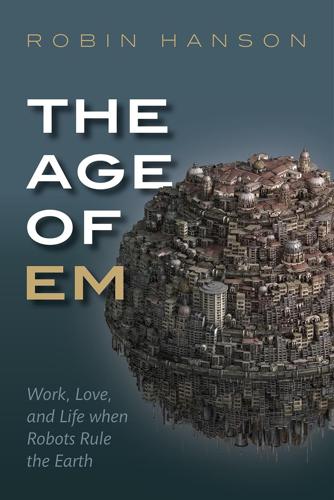
The Age of Em: Work, Love and Life When Robots Rule the Earth
by
Robin Hanson
Published 31 Mar 2016
But the existence of ems with much smaller physical dimensions likely also creates a demand for transport routes with smaller cross-sections. Pneumatic tubes seem one attractive candidate for smaller cross-section transport. Paris once had a large postal system of 6.5-centimeter diameter tubes that moved bottles containing letters at a speed of about 10 meters per second. This tube system started in 1866, and eventually had about 500 kilometers of tubes. Pneumatic tube systems work similarly today, although they are better automated and typically have diameters of 10 centimeters. Em cities might have much larger networks of pneumatic tubes to move small goods. Train tunnels today have a standard diameter of about 6 meters, while automobile tunnels are usually a bit larger.
…
Train tunnels today have a standard diameter of about 6 meters, while automobile tunnels are usually a bit larger. Pneumatic tubes are roughly a factor of 100 smaller than train and road tunnels. Tubes 100 times smaller than pneumatic tubes are a bit less than a millimeter in diameter. It turns out that this is a standard diameter for equipment tubes today. Similar to computing and manufacturing, future transport may also be thermodynamically adiabatic, to reduce the use of free energy. That is, there may be substantial subsystems of the transportation system wherein the free energy required to move cargo is proportional to the speed at which that cargo moves.

Bureaucracy
by
David Graeber
Published 3 Feb 2015
Partly for this reason, the sparkling efficiency of the system became a point of national pride. And indeed, the German post of the late nineteenth century was nothing if not impressive, boasting up to five or even nine delivery times a day in major cities, and, in the capital, a vast network of miles of pneumatic tubes designed to shoot letters and small parcels almost instantly across long distances using a system of pressurized air: Map of Berlin pneumatic tube postal system, 1873 Mark Twain, who lived briefly in Berlin between 1891 and 1892, was so taken with it that he composed one of his only known non-satirical essays, entitled “Postal Service,” just to celebrate its wondrous efficiency.121 Nor was he the only foreigner to be so impressed.
…
Indeed, growing up in New York City, I was always struck by the fascinating disparity between the magnificence of public amenities created around the turn of the century, when that very grandeur was seen as reflecting the strength and power of the Republic, and the apparently intentional tawdriness of anything created by the city, for its citizens, since the 1970s. For me, at least, the two greatest exemplars of that earlier age were New York’s monumental Central Post Office, with its sweeping, block-long marble steps and Corinthian columns, and the central branch of New York Public Library (which, incidentally, maintained its own system of pneumatic tubes for sending book requests into the stacks well into the 1980s). I remember once, as a tourist, visiting the summer palace of the Kings of Sweden—the first actual palace I’d ever been inside. My first reaction was: this looks exactly like the New York Public Library! 126. Brooklyn: Soft Skull Press, 2005. 127.

Supertall: How the World's Tallest Buildings Are Reshaping Our Cities and Our Lives
by
Stefan Al
Published 11 Apr 2022
Back on earth, the solution for hoist-less elevators may lie in pneumatic vacuum elevators, first used in 2000. Turbines at the top draw air from the tube and suck the cab upward. Other than a vacuum tube, such an elevator requires no pit, hoist way, machine room, or cable. It’s a bit like an old-time pneumatic tube mail system used to propel people instead of letters. Thus far, these elevators only travel up a few stories at best. With the development of the ultra-fast Hyperloop train, which travels through a low-pressure sealed tube, perhaps one day we will see a Hyperloop elevator. Maybe there is an end to this elevator madness after all.
…
These exchanges of “waste” increase the environmental efficiency of the whole. Through resource sharing, so-called circular cities are increasingly eliminating waste in urban areas as well. For instance, Hammarby Sjöstad outside of Stockholm has an incinerator to convert combustible waste from households into electricity. In Barcelona, a system of pneumatic tubes runs below the streets to bring trash to an anaerobic digestion facility. These subways for trash more easily bring it to the facility. Then microorganisms break down the material into biogas, a renewable-energy source. As cities are getting more circular, more sophisticated systems will need to manage and share resources.
…
This Big Brother may also be watching you, though, with computer vision monitoring your every garbage and sewage output. With skyscrapers producing and sharing energy, food, species, and more, our world may look quite different. Imagine a day in Singapore a few years from now. You throw your recyclable trash into a chute, where a system of pneumatic tubes sucks it to the recycling plant, avoiding the need for a polluting garbage truck. As your trash arrives, robots scan and sort the material, separating paper from aluminum from plastics. Your waste is then turned into a resource, recycled as a new can or toothbrush. Your food waste is piped to an anaerobic digestion facility, where microorganisms break down the organic material, creating fertilizer and biogas that power the nearby vertical farm.
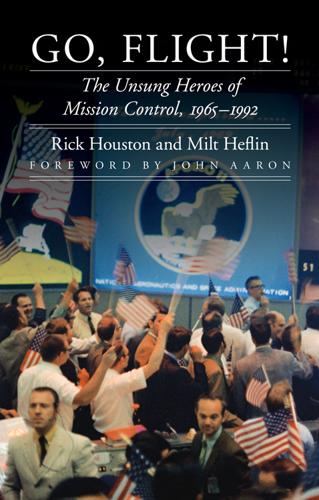
Go, Flight!: The Unsung Heroes of Mission Control, 1965-1992
by
Rick Houston
and
J. Milt Heflin
Published 27 Sep 2015
Maybe it is a faint remnant of the electronics that once hummed and buzzed here. The odor is neither pleasant nor unpleasant. It is just—distinct. The four rows of consoles facing the front of the room are almost quaint in their simplicity—workstations feature a rotary dial phone. And canisters, too, to send messages to back rooms via pneumatic tubes, the very same kind of transport system featured at your local bank’s drive-through window. No email or instant messaging here. Yet if there’s a temptation to dismiss the room out of hand, images of events past begin to sink in and the sheer enormity of everything that took place here hits like a ton of bricks.
…
Llewellyn, widely known as John Star, was a Korean War veteran who excelled at NASA despite struggling with severe post-traumatic stress syndrome. At the end of the row are Jerry Bostick (sitting) and Bill Boone (standing). Jerry Elliott is seated behind Llewellyn. Courtesy NASA. Most credit Llewellyn for the Trench’s nickname, either in whole or in part. It was during the flight of Gemini 6 that pneumatic tubes from the messaging system began piling up around him on the first row, and he thought they looked a lot like empty 105-millimeter howitzer shells he encountered in the trenches back in Korea. If that did not seal it, Llewellyn once issued a challenge to the simulation team during a particularly testy debriefing.
…
“To a great extent, we were technical dinosaurs. Young folks like John Aaron, Phil Shaffer, and Don Puddy, that generation came in with a background with that type technology.” Gone also were the days when von Ehrenfried was forced to trot here and there with messages. Now in place was yard after yard of pneumatic tubes that could zip canisters to and from the MOCR. The dispatches were always of the utmost importance—or not. “People would start putting all kinds of crap in there, not just messages,” von Ehrenfried said. “They would put a hot dog in there or a sandwich. We started getting things clogged up, so they said to knock that shit off.”
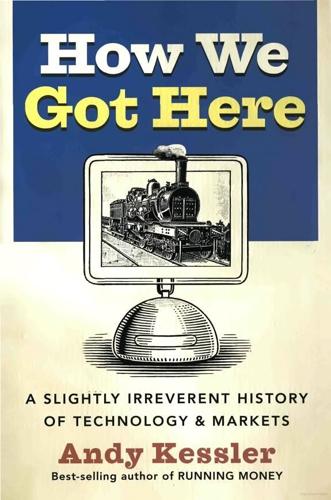
How We Got Here: A Slightly Irreverent History of Technology and Markets
by
Andy Kessler
Published 13 Jun 2005
Stale, day old quotes worked for many people, and Wall Street was happy to have people “think” these were real prices. Most of the use of technology by Wall Street was to handle its internal workings. With fixed commissions, technology wasn’t needed as much to drive revenue as to keep costs down. Pneumatic tubes were installed at the exchange in 1918, mainly to send completed trade tickets from the traders to the back office clearing humps. In April 1920, the Stock Clearing Corp. was created to handle the increased paperwork. This was mainly a large room with piles of certificates passed between workers. *** So now, on the brink of the booming 1920s, Wall Street had what it needed to fund America’s post-WWI growth.
…
As volume and profits grew, more and more Wall Street partnerships were created to get in on the game. Brokers and traders grew in number, and they all feasted on fat commissions. It was a people business. When institutions or individuals wanted to buy a stock, they called their brokers who relayed the order down to the floor of the exchange. Electronic message switchboards replaced the pneumatic tubes of 1918 so order entry and execution confirmation could happen in almost real time. Of course, this was to the advantage of the traders; they could get the most current feel for the market and customers were still out of that loop. But the back office was neglected and stock certificates still had to be collected and distributed.

Shadow Work: The Unpaid, Unseen Jobs That Fill Your Day
by
Craig Lambert
Published 30 Apr 2015
Henderson believed that a new delivery method could reduce gasoline prices and lure customers. Between 1946 and 1948, he worked with electronics engineers to design a system that could transmit data about the price of gas and the number of gallons dispensed from a pump to an employee sitting in a tower above. A pneumatic tube running overhead to the tower could whisk cash up from the customer and return change. Self-service gasoline pumps were born. Henderson Thriftway charged 3 cents per gallon less than the petroleum giants and immediately began taking business away from them. At prevailing 1949 prices, 3 cents was almost 20 percent less.
…
First, new technologies can create new forms of shadow work. Electronic circuits that carried information from the gas pump to a cash register enabled Bill Henderson to offer the self-serve option at Henderson Thriftway. At first, the technologies are rudimentary and cumbersome, like Henderson’s pneumatic tube sucking cash up to the register above. But as better devices appear to help consumers handle the task, they smooth the adoption of shadow work. Second, shadow work that requires no training can spread readily. The mechanism needs to be essentially idiot-proof. Recall the spillage and fire concerns in Henderson’s early years, before the advent of automatic cutoffs on pump nozzles.

City: A Guidebook for the Urban Age
by
P. D. Smith
Published 19 Jun 2012
The novel reflects the sheer excitement and modernity of this new kind of shopping. Watching the crush of the crowds in Le Bon Marché, he was constantly aware of ‘the vastness of Paris – a city so vast that it would always be able to supply customers’. Department stores revolutionised the process of buying and selling. They pioneered new technology, such as pneumatic tubes to send orders around the store, cash registers for instant transactions (Le Bon Marché had no fewer than seventy-three in Zola’s day), as well as lifts and escalators (the first department store to have an elevator was in New York City at the corner of Broome Street and Broadway in 1857). People were encouraged to regard the shop as an exhibition hall.
…
The system was pressurised by compressors in eleven power stations. Travelling at between 30 to 40 mph, the canisters were blasted around the city at the rate of five a minute. Each held some five hundred letters and every day about 100,000 letters were moved in this way. A journey that could last forty minutes by road took a cylinder sent through the pneumatic tube network just seven minutes. But it was a costly way of shifting mail and Philadelphia mothballed its network in 1918, switching instead to a new transport technology – automobiles. New York, too, suspended its subterranean mail service for a while, only to reinstate it by popular demand in 1922.
…
Berlin’s Rohrpost network (1865–1963) was one of the largest pneumatic mail systems, extending for some 400 kilometres. In Paris, pneumatic mail systems (or ‘tubes pneumatiques’) continued to be used until 1983, when telexes and fax machines made the service redundant. Prague’s system was still in use in 2002 and is currently being restored.7 Placing a mail canister into a pneumatic tube, 1930. Eco-Cities We are living through a unique period in the history of our planet. No other species has ever disrupted the delicate balance of the earth’s climate before. As the Nobel prize-winning chemist Paul Crutzen has said, we have entered a geological epoch of our own making – the Anthropocene.

Your Computer Is on Fire
by
Thomas S. Mullaney
,
Benjamin Peters
,
Mar Hicks
and
Kavita Philip
Published 9 Mar 2021
Tubes also recall a century-old manner of delivering mail, when canisters literally shot through pneumatic tubes. Post-office worker Howard Connelly described New York’s first pneumatic mail delivery on October 7, 1897, in Fifty-Six Years in the New York Post Office: A Human Interest Story of Real Happenings in the Postal Service. He reported that the first canister contained an artificial peach and the second a live cat. Megan Garber, writing for the Atlantic, commented: “The cat was the first animal to be pulled, dazed and probably not terribly enthused about human technological innovation, from a pneumatic tube. It would not, however, be the last.”18 In Connelly’s 1931 autobiography, and at the heart of the things that fascinated his generation, we see an exuberant imagination associated with material objects and the physical constraints of transporting them.
…
Howard Wallace Connelly, Fifty-Six Years in the New York Post Office: A Human Interest Story of Real Happenings in the Postal Service (1931), cited in Megan Garber, “That Time People Sent a Cat Through the Mail,” Atlantic (August 2013), https://www.theatlantic.com/technology/archive/2013/08/that-time-people-sent-a-cat-through-the-mail-using-pneumatic-tubes/278629/. 19. Data from TeleGeography, https://www2.telegeography.com/our-research. TeleGeography’s assessment of 99% of all international communications being carried on undersea fiber optic cables was also reported by the “Builtvisible” Team in “Messages in the Deep” (2014), https://builtvisible.com/messages-in-the-deep/.

The Battery: How Portable Power Sparked a Technological Revolution
by
Henry Schlesinger
Published 16 Mar 2010
Whatever field he touched, no matter how briefly, he seemed to invent new devices for it, and he even sat on the board of inquiry of the first Atlantic cable. To solve the problem of overloaded short-distance lines, Clark came up with a system of pneumatic tubes. Just as the telegraph was being scaled down to power doorbells, Clark scaled down a failed concept for a pneumatic tube rail line that dated back to 1810 and had originally been intended as a type of high-speed people mover. In 1853, he installed the first line of tubes measuring an inch and a half and spanning some 200 yards from the central telegraph office to the stock exchange.
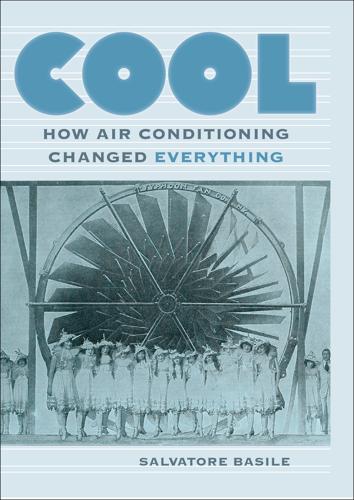
Cool: How Air Conditioning Changed Everything
by
Salvatore Basile
Published 1 Sep 2014
(Everybody’s Magazine) At completion, the Ansonia was 800 percent over budget but boasted oddball luxuries that few other buildings had, including a roof-garden farm that provided milk and eggs to tenants, a lobby fountain that was home to a family of live seals, door-to-door message delivery by pneumatic tubes, running filtered ice water in every apartment, complete soundproofing, double-width entrance doors to each suite to allow any tenant a grand piano … and for the first time in any hotel, the promise of cooled air in the summertime. Carpentry and Building reported, “The air is drawn into the building through screens and filter cloths to the subbasement, where large electric blowers force it over coils, which in winter are heated by steam and in summer cooled by freezing brine, and then discharge it under pressure through the galvanized steel flues which arise through the building.”
…
And they were useless in bargain basements; as they were completely unventilated spaces, the basements’ heat, combined with their always-combative customers, terrified the novice saleswomen who were forced to work in them. Stores tried to fill the cool-air gap by other means, reasonable or not. Manufacturer and Builder claimed that the department store pneumatic-tube cash system “affords a simple and effective system of ventilation”—but no one believed it, especially the cashiers sitting in front of the tubes. Rather less hygienically, Brooklyn’s Abraham & Straus offered “a barrel constantly making the rounds of the store filled with a cooling beverage,” and Belk Brothers of Charlotte, North Carolina, maintained a barrel filled with ice water at their store’s front entrance; five tin cups were tethered to the barrel for customer convenience.

The Complete Novels Of George Orwell
by
George Orwell
Published 3 Jun 2009
That’s better, comrade, that’s much better,’ she added encouragingly as Winston, with a violent lunge, succeeded in touching his toes with knees unbent, for the first time in several years. 4 With the deep, unconscious sigh which not even the nearness of the telescreen could prevent him from uttering when his day’s work started, Winston pulled the speakwrite towards him, blew the dust from its mouthpiece, and put on his spectacles. Then he unrolled and clipped together four small cylinders of paper which had already flopped out of the pneumatic tube on the right-hand side of his desk. In the walls of the cubicle there were three orifices. To the right of the speakwrite, a small pneumatic tube for written messages; to the left, a larger one of newspapers; and in the side wall, within easy reach of Winston’s arm, a large oblong slit protected by a wire grating. This last was for the disposal of waste paper. Similar slits existed in thousands or tens of thousands throughout the building, not only in every room but at short intervals in every corridor.
…
As soon as Winston had dealt with each of the messages, he clipped his speakwritten corrections to the appropriate copy of The Times and pushed them into the pneumatic tube. Then, with a movement which was as nearly as possible unconscious, he crumpled up the original message and any notes that he himself had made, and dropped them into the memory hole to be devoured by the flames. What happened in the unseen labyrinth to which the pneumatic tubes led, he did not know in detail, but he did know in general terms. As soon as all the corrections which happened to be necessary in any particular number of The Times had been assembled and collated, that number would be reprinted, the original copy destroyed, and the corrected copy placed on the files in its stead.
…
It was an intricate and responsible job and had better be dealt with last. The other three were routine matters, though the second one one would probably mean some tedious wading through lists of figures. Winston dialled ‘back numbers’ on the telescreen and called for the appropriate issues of The Times, which slid out of the pneumatic tube after only a few minutes’ delay. The message he had received referred to articles or news-items which for one reason or another it was thought necessary to alter, or, as the official phrase had it, to rectify. For example, it appeared from The Times of the seventeenth of March that Big Brother, in his speech of the previous day, had predicted that the South Indian front would remain quiet but that a Eurasian offensive would shortly be launched in North Africa.

Failure Is Not an Option: Mission Control From Mercury to Apollo 13 and Beyond
by
Gene Kranz
Published 7 Jan 2000
This period in the mission, with the infrequent contacts, the spacecraft in drifting flight, and the crew asleep, provided an opportunity for detailed analysis of the spacecraft systems and orbital trajectory. Mission Control borrowed technology from many eras. Most of the systems the controllers used were cutting-edge, only months removed from the laboratories. One notable exception was borrowed from turn-of-the-century technology. A pneumatic tube system provided the means to transmit messages of all types between the three floors and the work areas used by controllers and computer operators. The P-tube carriers were aluminum cylinders, twelve inches in length and three and one half inches in diameter. A spring-loaded hinged door allowed messages to be placed in the tube.
…
The team structure was successful and the shakedown cruise of the new control center was a roaring success. We would need every millimeter of technology as each successive mission increased in complexity, duration, and risk. The computers and television displays gave the controllers instant access to hundreds of Gemini measurements. The trajectory data was instantly available to users, and the pneumatic tube eliminated the need for runners—and the distraction caused as they raced around the control room. But most of all, we liked the new Mission Control Center because we no longer had to travel to the Cape and live in motel rooms for day after day. Summer 1965 The Gemini 5 mission was scheduled to last eight days, twice as long as the previous one.
…
Odyssey O’Neill, Gerard O’Neill, John Operating procedures Operations and procedures officer Orange Team Orbit trajection propagation Orbital mechanics Orbital missions Osan Air Base Osgood, Cathy Pacific Airmotive Page, George Paine, Thomas Parks, Oliver Parks Air College Passive thermal control (PTC) maneuver Patnesky, Andrew Patrick AFB Paules, Gran Pavelka, Ed Perssons, Al Peters, Bill Petrone, Rocco Philco (Co.) Phillips, Sam Pioneering Mission for the Twenty-first- Century America Pioneering the Space Frontier Plan X Pneumatic tube (P-tube) system Popovich, Pavel Potassium intake Powers, Shorty Prescott, Warren Presley, Will Press Press conferences regarding Apollo Apollo 11 mission Press corps Preston, G. Merritt Public Affairs Office/officer Puddy, Don Quail flight test Range safety officer (RSO) Ransdell, Lois Real time Recovery teams Red Team Redstone missions Redstone rocket launches MR-1 MR-3 Reed, Dave Remote site teams astronauts and doctors drilling and EVA Remote sites CapComs computer systems Gemini missions Rendezvous Apollo missions backup Gemini missions practicing priority in space program by Russians Renick, Gary Retropack Retro controller (RETRO) Retrofire Rickover, Hyman Risk Risk judgment Roberts, Tecwyn (Tec) Rockets failures high-altitude research Roll-and-pitch program Roosa, Stu Rose, Rodney Rose Knot Victor tracking ship Sabre jet Saturn rockets Saturn rockets guidance and computer system problems with testing Saturn V rocket Saultz, Jim Saxe, Ira Saylor, Ralph Schirra, Wally Apollo 7 first manned CSM mission Gemini 6 Mercury mission Schmitt, Jack Apollo 17 Schneider, William Schweickart, Rusty Science and Applications Directorate Scientists Scott, Dave Apollo 9 Apollo 15 field geology trip Gemini 8 Scott, Gary Sealab See, Elliott Service module Apollo 13 redesign of Service propulsion system (SPS) Shaffer, Phil Shea, Joe Shepard, Alan Apollo 14 Cape CapCom first manned mission MCC MR-3 walk on Moon Sigma 7 Silver, Lee Silver Team Simpkinson, Scott SimSup (simulation supervisor) Apollo 11 MA-3 Simulation technology Simulations Apollo 9 Apollo 11 Gemini 7 Gemini 76 launch Singing Wheel Sjoberg, Sigurd Skylab Slayton, Donald K.
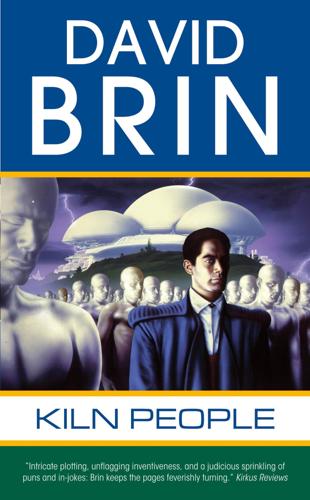
Kiln People
by
David Brin
Published 15 Jan 2002
The Universal Kilns security staff had taken charge of that mystery, sifting the estate for any sign of both missing dittos. So far to no avail. I didn't expect them to achieve much. It's easy to smuggle a rox in a box. Millions, cushioned mummylike in CeramWrap, get shunted all over the city each day by truck, courier, or pneumatic tube. And it's even easier getting rid of a dead one -- just flush the remains into a recycler. Without a pellet, one batch of golem slurry is no different than any other. Anyway, I had investigations to take care of, including one for a client who was willing to pay top rates. Ritu Maharal wanted me to look into the mysterious death of her father.
…
Pal shouts in my ear to turn left. So I do. I can feel the wall cameras, their passive eyes recording. No time to stop and shout my innocence -- I didn't know! Only actions can speak for Albert Morris now. To keep him out of jail, I kick in my reserves. Ahead, the loading docks. Gel-wrapped ditto blanks slide into pneumatic tubes, departing for distant customers with a sucking whoosh. Giant forklifts -- huffing and puffing -- haul larger models onto trucks. "Over here!" The yell echoes, both in my ear and across the loading bay. I spy a version of myself, dyed UK Orange, bearing a weasel-like creature on his shoulder.
…
The busy worker ants who keep civilization going -- every hue and candy-striped combination -- bustled in/out of nearby factories and workshops, bearing heavy loads, hurrying to confidential meetings or carrying rush orders on spindly legs. Traffic snarled for a while, forcing us to wend around an open pit construction site, marked by a broad holo sign: CITYWIDE ROXTRANSIT PNEUMATIC-TUBE PROJECT: YOUR TAX DOLLARS AT WORK A glimmering animated display showed steady progress toward the day when clayfolk and other cargo would zip to every part of town via an extended network of airless tubes, shuttling to any address like so many self-targeted Internet packets, automatically and at hardly any cost.

Utopias: A Brief History From Ancient Writings to Virtual Communities
by
Howard P. Segal
Published 20 May 2012
Yet technology is at once a principal cause of and solution to the major problems Bellamy addresses, including inefficiency (overproduction and underproduction, excessive competition, mismanagement); inequality of opportunity and of income; immorality (greed, monopoly, exploitation); and urban blight. Technology’s purposeful, positive use—from improved factories and offices to new highways and electric lighting systems to innovative pneumatic tubes for delivering goods, electronic broadcasts, and credit cards—is critical to America’s predicted transformation from living hell to heaven on earth. The Variety of Utopias 31 Without question, Bellamy’s envisioned twenty-first-century United States is an avowed technological utopia, an allegedly ideal society not simply dependent upon machines but outright modeled after them, its citizens quite willing cogs in a “great industrial machine.”
…
Crime would barely exist because poverty would no longer exist. In these ways, Looking Backward is a more complex and more humane work than William Morris in his News From Nowhere (1890)—discussed in the next chapter—would ever acknowledge. Interestingly, Bellamy predicted only a few specific technological advances: those pneumatic tubes to deliver goods, electronic broadcasts, and credit cards instead of money. Other predictions such as department stores were primarily logical extensions of existing American society. Nevertheless, Looking Backward remains timely in its concern for using cutting-edge technologies efficiently, for distributing the opportunities and wealth derived from technological advances fairly, for offering varieties of work and living arrangements, and, not least, for constructing a vision of the future out of moral conviction.

Celebration of Fools: An Inside Look at the Rise and Fall of JCPenney
by
Bill Hare
Published 30 May 2004
But let me explain what I tell every one of our associates." "Of course, sir," said Batten. "If you have any complaint, even if you don't like my tie or the shine on my shoes—anything—just write it down on a slip of paper. You don't have to sign your name. Just send it to the office in the tube." Maynard gestured at one of the old pneumatic tubes for sending sales slips and cash to and from the office. "The cashier puts the notes in a shoe box and we read them at the store meeting every Thursday morning." "Is that difficult?" Batten asked. Maynard smiled again and said, "No. I don't run the meeting, the first man does. But whatever the complaint, if it's reasonable, he corrects the situation."
…
The problem was that they couldn't get along with each other. Worse, both of them were totally flummoxed with Maynard's management style. "What do you mean?" one or the other would plead to the manager. "Please explain what you want." They were gone in a little less than a year. Batten received a note via the pneumatic tube: Please see me in first men's office. —Maynard He quickly went up to the balcony. The first men's office was between Maynard's and the room where the secretary and the cashier worked. Just outside, he had to step aside as two young men from the stockroom removed one of the twin desks. The manager was waiting inside with a big smile.
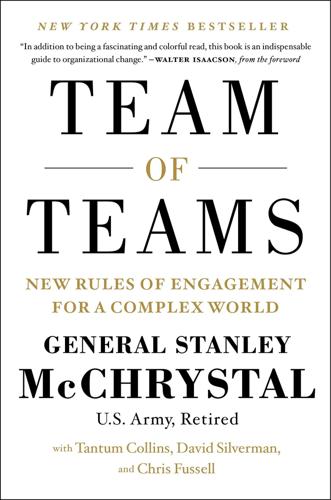
Team of Teams: New Rules of Engagement for a Complex World
by
General Stanley McChrystal
,
Tantum Collins
,
David Silverman
and
Chris Fussell
Published 11 May 2015
New technologies enabled the construction of larger, taller buildings to house the increasingly complicated strata of the workplace. The “office building” took shape under the hand of architects such as Louis Sullivan, who envisioned structures composed of independent, standardized cells, which he likened to the hexagonal building blocks of beehives: discrete, MECE units, not to be merged.* Dictaphones and pneumatic tubes enabled discrete, directed communications at a distance without the messy inefficiencies of the countinghouse. Executives moved to separate rooms, then to plush suites, and finally to different floors to separate them from the “pools” of stenographers toiling away at desks arranged in grids, silent but for the clacking of typewriter keys.
…
“exporter, wholesaler, importer” . . . Alfred D. Chandler Jr., The Visible Hand (Cambridge, Mass.: Harvard University Press, 1993), 15. In Saval, Cubed, 20. 750,000 . . . Saval, Cubed, 36–40. New technologies enabled . . . Saval, Cubed, 36. building blocks of beehives . . . Saval, Cubed, 109. Dictaphones and pneumatic tubes . . . Saval, Cubed, 40. Executives moved . . . Saval, Cubed, 144. the term “ladder” . . . Saval, Cubed, 39. efficient flow of paperwork . . . Saval, Cubed, 5, 67. “The girl at the end” . . . Saval, Cubed, 151. turning their desks away . . . Saval, Cubed, 61. Bell Labs . . .

The Targeter: My Life in the CIA, Hunting Terrorists and Challenging the White House
by
Nada Bakos
Published 3 Jun 2019
But those were the jobs being given to equally qualified male applicants. Instead the bank offered me a position as a teller. I worked behind the drive-through window listening to the whoosh of the pneumatic tube, spending my days cashing checks and telling people how to fill out a deposit slip. I became resentful. I didn’t want to live in Montana at this point in my life, and I certainly didn’t want to work the pneumatic tube. I still had dreams of a life overseas, and every day at the bank I began to feel like the walls were closing in on me. In my restlessness, I took a job in organizational development in human resources at a nearby metals-mining company.

My Misspent Youth: Essays
by
Meghan Daum
Published 2 Mar 2001
Where are those heady nights on Beekman Place, those working days on lower Fifth, those underpaid trust-fund girls with the clacking Smith Coronas and the clicking low-heeled pumps from I. Miller? Where are Bennet Cerf’s entrepreneurial seeds, Maxwell Perkins’ worshipful authors, Mary McCarthy’s well-read bedfellows? Where are the editorial assistants lunching frenetically at the Oyster Bar counter? Where are the pneumatic tubes running directly from Vassar and Smith to Viking and Scribners, sucking young English majors down their chambers and depositing them at chewed, wooden desks with tins of lemon drops in the top drawers and manuscripts towering over the “In” boxes? Alas, lament entry-levelers everywhere, the thirties are gone.
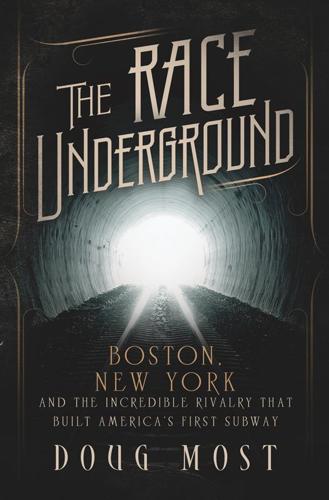
The Race Underground: Boston, New York, and the Incredible Rivalry That Built America's First Subway
by
Doug Most
Published 4 Feb 2014
In an article in Scientific American published just before the fair opened, Beach wrote that he had developed a transportation system that was as “swift as Aeolus (god of breezes) and silent as Somnus (god of sleep and dreams).” Halfway through the fair, on October 19, another article on Beach’s pneumatic tube appeared in Scientific American. At the time that his article appeared, more than twenty-five thousand people had already ridden the tube and a new line was forming every day. Beach wanted to make sure the crowds kept coming. “The most novel and attractive feature of the exhibition is by general consent conceded to be the pneumatic railway, erected by Mr.
…
The article focused on the railway’s details, but in one line, it planted the notion that perhaps the pneumatic railway was the future of transportation. “It is probable that a pneumatic railway of considerable length for regular traffic will soon be laid down near New York.” Of the hundreds of inventions that filled the floor of the armory for six weeks, Beach’s pneumatic tube was the sensation that could not be ignored. Everybody wanted to ride on it, and by the time the fair closed in November, more than seventy-five thousand people had. Beach wanted everyone to remember what they had witnessed, so that he could begin to push the idea with New York’s lawmakers. He published a pamphlet in which he described in the simplest terms how his pneumatic railway worked.
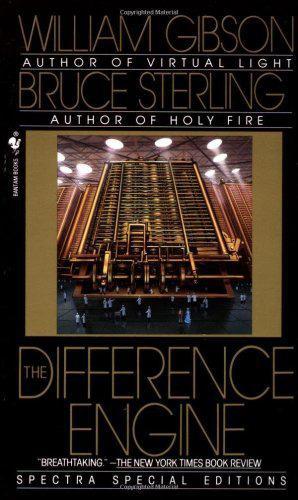
The Difference Engine
by
William Gibson
and
Bruce Sterling
Published 31 Aug 1990
When they attempt to return, the risen masses will meet them with fire and steel! We will fight them from the roof-tops, from doorways, alleyways, sewers, and rookeries!" He paused to dab his nose with a snotty kerchief from his sleeve. "We will sequester every sinew of organized oppression. The newspapers, the telegraph lines and pneumatic tube-ways, the palaces and barracks and bureaux! We will put them all to the great cause of liberation!" Mallory waited, but it seemed that the young fanatic had at last run out of steam. "And you want us to help you, eh? Join this people's army of yours?" "Of course!" "What's in it for us, then?"
…
McNeile's patent Swiss bath-tub. Putting his brandy aside unfinished, he nodded then, and napped. And dreamed, perhaps, of the Eye. The Bessemer docked at Calais at half past one. Monsieur Lucien Arslau's apartments were in Passy. At noon, Oliphant presented his card to the concierge, who conveyed it via pneumatic tube to Monsieur Arslau's establishment. Almost immediately, the whistle attached to a nickeled speaking-tube peeped twice; the concierge bent his ear to the funnel; Oliphant made out faint tones of shouted French. The concierge showed Oliphant to the lift. He was admitted, on the fifth floor, by a liveried manservant wearing an ornate Corsican stiletto through a pleated sash of gros de Naples.
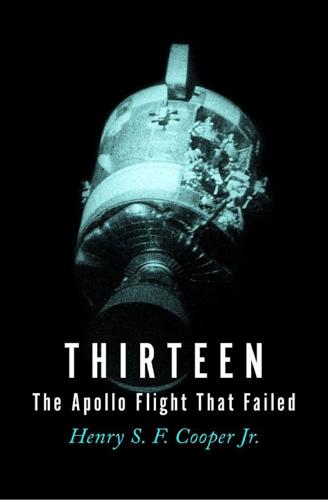
Thirteen: The Apollo Flight That Failed
by
Henry S. F. Cooper
Published 31 Dec 2013
About the only event requiring the controllers’ close attention since Apollo 13 left earth orbit had been a small rocket burn the day before, called a “hybrid transfer maneuver,” which had aimed the spacecraft for its target on the moon, the Fra Mauro hills—and, incidentally, had taken it off a free-return trajectory, the safe path most previous Apollos had followed so that in the event of trouble the spacecraft could, without navigational adjustment, swing around the moon and head back to earth. Now, a couple of minutes before nine, one of the flight controllers, the Retrofire Officer, whose responsibility it was always to have a plan ready, in case of trouble, for bringing the astronauts home, sent word to the Flight Director that another bridge was about to be burned: via a pneumatic-tube system connecting the consoles, he dispatched a routine memorandum to the effect that the spacecraft was nearing the spot where it could no longer reverse its direction and return directly to earth if anything went wrong. There were a couple of dozen controllers on duty, of whom only about half were directly involved with the running of the spacecraft at any given time.
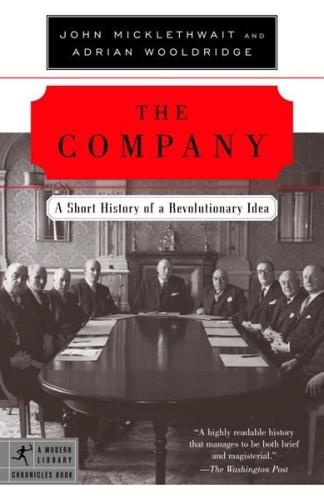
Company: A Short History of a Revolutionary Idea
by
John Micklethwait
and
Adrian Wooldridge
Published 4 Mar 2003
To deal with the growing problem of fulfilling orders, Rosenwald developed a mechanical scheduling system, a sort of assembly line for customer orders. “Miles of railroad tracks run lengthwise through and around this building for the receiving, moving and forwarding of merchandise,” boasted the Sears catalogue. “Elevators, mechanical conveyors, endless chains, moving sidewalks, gravity chutes, apparatus and conveyors, pneumatic tubes and every known mechanical appliance for reducing labor, for the working out of economy and dispatch is to be utilized here in our great Works.”1 One of the first people to visit this industrial marvel was reputedly Henry Ford. In 1916, Rosenwald added another innovation—a pension fund for employees in which the firm’s contributions were tied to its profits and much of the fund was invested in Sears’s stock.
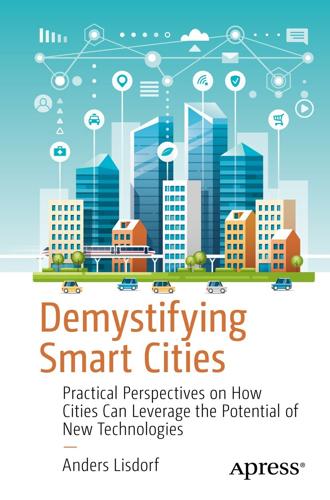
Demystifying Smart Cities
by
Anders Lisdorf
These solutions allow us to minimize the amount of human labor in a number of tedious tasks, but also allow us to do things at a greater scale with greater intelligence. Consider traffic counts: most cities need to manually count traffic to understand the flow of traffic in central corridors. This is a tedious and resource-intensive task, since you need a human to manually count each vehicle. IoT offers alternatives such as counting vehicles by pneumatic tubes on the ground, infrared light, and radar or using computer vision built in to cameras. This can be done at a much bigger scale, since humans need to go and sleep every once in a while, whereas devices never sleep and will keep counting when they are set up, and they will be doing it at a lower cost.
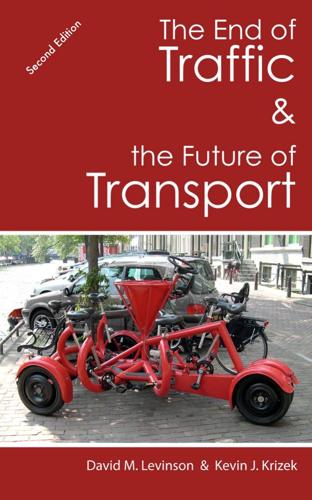
The End of Traffic and the Future of Transport: Second Edition
by
David Levinson
and
Kevin Krizek
Published 17 Aug 2015
Similarly, the same underlying trends portend a decline in work travel, as workers take some of the gains of automation and information technology with less time in the office or the factory (or hospital, or school, or any of the thousands of other worksites). Eventually there may be replicators, or pneumatic tubes, or good 3-D printers, and delivery as most people think of it now will also decline. Or, there may be less overall consumption. But we can fairly safely extrapolate that, for a while, 20th century retail infrastructure and supporting transport system of roads and parking is overbuilt for the 21st century last-mile delivery problems in an era with growing internet shopping. 12.

Subscribed: Why the Subscription Model Will Be Your Company's Future - and What to Do About It
by
Tien Tzuo
and
Gabe Weisert
Published 4 Jun 2018
Then another piece of paper gets passed to the inbox of someone who calculates the product costs and taxes and shipping costs and any applicable discounts and mails out an invoice, which then flags the collections department, which sends out the PO and charges the credit card. Finally, an accountant in the fulfillment department books the ten grand. Maybe the piece of paper moves through a pneumatic tube, I’m not sure. Now the reality, of course, is things are much more complicated. Any organization of any decent size will not have one of each of these systems; they’ll have dozens. Whether they’re the result of acquisitions or new business units, these fulfillment chains tend to multiply.

Time Travel: A History
by
James Gleick
Published 26 Sep 2016
The narrator himself seems to be a bewildered civilian navigating a paranoid military bureaucracy. We readers, knowing what we know about the sad fate in store for the written word, may smile grimly as clerks stamp index cards “classified,” documents tumble from mail chutes, envelopes shoot through pneumatic tubes, dog-eared folders vanish into metal safes, and paper tape snakes from computers. Of course, we recognize our own world, too. Rambling deeper and deeper into the labyrinth, the narrator stumbles upon a room full of books: “gray, crumbling” books on dusty, sagging shelves. It is the Library. A balding, shuffling, bespectacled, cross-eyed old man seems to be in charge.
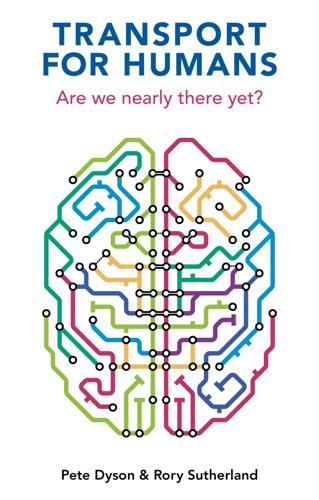
Transport for Humans: Are We Nearly There Yet?
by
Pete Dyson
and
Rory Sutherland
Published 15 Jan 2021
Pearson’s scheme to link the mainline rail stations must have seemed equally outlandish, as it involved digging up entire city streets and inventing a way for steam trains to store smoke while underground. Henry Mayhew – editor and co-founder of the satirical magazine Punch and an advocate of reforms for the working class – fretted that humans would be treated like cargo. He wrote that Pearson’s ‘drain-like’ tunnel would be ‘sending the people like so many parcels in a pneumatic tube, from one end of the metropolis to the other’. Punch joked that the population of London would have to make their coal cellars available for the trains to pass through.4 Speed has not always been essential. It took twenty years to build the Underground’s first route – the Metropolitan Line – and although it was a triumph of Victorian engineering, the vision was, from conception, human.
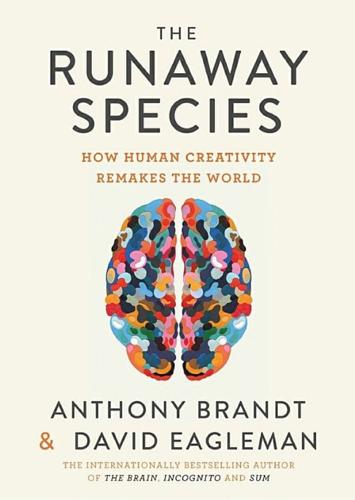
The Runaway Species: How Human Creativity Remakes the World
by
David Eagleman
and
Anthony Brandt
Published 30 Sep 2017
He predicted that Burbank’s citizens of the future would live in apartment buildings made of plastic with electricity supplied by underground atomic power transmitted by waves through the ground. The city’s thoroughfares would be transformed: street parking and parking lots would be replaced by an automated, hub-based system. To reduce traffic congestion, freight would be delivered by an underground belt system similar to the pneumatic tubes that once delivered the mail.1 It was an articulate and inventive vision. But none of it came to pass. Norwood was not the only one with an unreliable crystal ball. World’s Fairs are international forums of innovation, but they are invariably poor predictors of coming breakthroughs. The 1893 Chicago World’s Fair attracted millions of people to a vast fairground to see the latest in windmills, steamships, telegraphs, electric lighting and the telephone.
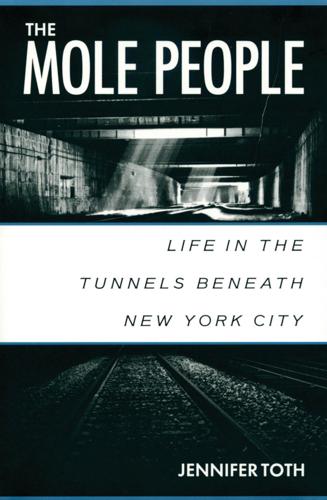
The Mole People: Life in the Tunnels Beneath New York City
by
Jennifer Toth
Published 14 Jun 1993
In 1912, workers digging the BMT (or the Brooklyn Manhattan Transit, known by graffiti artists as “the ding-dong line” because the doors used to make a ding-dong sound when they opened) tunnels found the city’s first subway line twenty-one feet under Broadway between Warren and Murray Streets. It consisted of a single pneumatic tube 312 feet long and 9 feet wide, in which the cars were pulled or pushed along by huge fans at the ends of the tunnel. Noted inventor Alfred Ely Beach, the founder and one-time editor of Scientific American magazine, built the subway in 1870 and it ran for only a few weeks before New York’s infamous Mayor Boss Tweed shut it down.
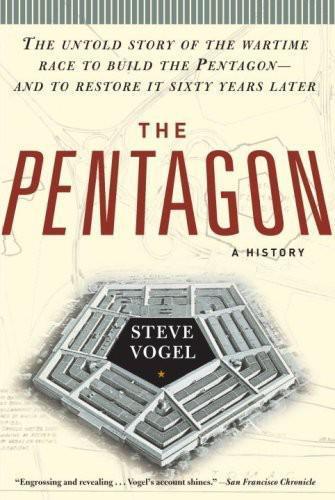
The Pentagon: A History
by
Steve Vogel
Published 26 May 2008
Broad ramps of polished black terrazzo led out from the concourse; one carried pedestrians farther into the second floor, another led up a 10 percent slope to the third floor, a third with two switchbacks rose to the fourth floor. The corridors had the feel of a circus, as messengers rolled by on bicycles, roller skates, and oversize tricycle carts tinkling their bells to avoid running over pedestrians. Message centers on each floor served as hubs, linked by fifteen miles of pneumatic tubes that whisked files and correspondence throughout the building inside plastic containers. The quickest way to any far-off point in the building—even if it was on the same ring where one started—generally was to go toward the center of the building to the inner A Ring and follow signs leading to the proper radial corridor.
…
Much of this netherworld was built into the low ground on the eastern side of the building, but there were pockets of space all around. The basement extended beneath the Mall and River terraces, well beyond the Pentagon’s confine creating an F and even a G Ring below some of the building. Utility pipes, ducts, and pneumatic tubing snaked through the narrow corridors. The basement had a Byzantine quality that would only grow over the years, as various mysterious offices took up residence in the Pentagon’s lower reaches. Yet its design had more to do with engineering than secrecy. Since the Pentagon had been built on both low ground and high ground—the western two-thirds forty feet above sea level, and the eastern third ten feet above—the low ground had been raised with eight feet of fill.

Wonderland: How Play Made the Modern World
by
Steven Johnson
Published 15 Nov 2016
Instruments were locked to the same tempo because they were being played by human beings who could follow the gestures of the conductor or hear the beat being generated by the rhythm section. But a machine needed mechanical cues to stay in sync with other machines. Antheil had attempted to jerry-rig a system of pneumatic tubes and electric cabling to coordinate the pianolas, but none of his efforts worked in the end. Eventually, he gave up and rewrote the score for a single pianola, accompanied by traditional pianists. Even without the sixteen player pianos, the 1926 premiere managed to provoke a small riot in the theater.

Artemis
by
Andy Weir
Published 14 Nov 2017
The smelting facility sat two hundred meters from the reactors. It was a mini bubble thirty meters across, with a hopper on one side. The hopper ground rocks into a coarse grit and put it in sealed cylindrical containers. The containers were sealed into pipes, which forced them into the facility with air pressure. Like an old-school pneumatic tube system from the 1950s. If you’re going to have a bunch of air pumps and vacuum-management systems in your facility anyway, you may as well take advantage of them. The train airlock stood on the other side of the bubble. The train tracks leading to it diverged into two lines. One ran to the airlock, the other to the unmanned silo car that transported rocket fuel to the port.

Starbucked: A Double Tall Tale of Caffeine, Commerce, and Culture
by
Taylor Clark
Published 5 Nov 2007
Illy, there can only be one perfect espresso, and his tight control over every variable in the coffee-preparation process allows him to achieve it regularly. On a guided tour of illy caffè’s Trieste facility — with a security guard trailing ten yards behind at all times, ready to pounce if I brandished anything remotely resembling a camera — I saw the rest of Illy’s directives put into action. Pneumatic tubes transported the beans from the roasting plant to the packaging center, where machines dumped the coffee into airtight tins and flushed them with nitrogen to preserve freshness, before finally pressurizing and sealing the containers. At one of illy caffè’s two on-site concept espresso bars, a barista pulled me a shot according to strict percolation instructions; the water must be heated to exactly 194 degrees Fahrenheit, then pushed through the coffee grounds for precisely thirty seconds at a pressure of 130 psi, thereby generating a layer of khaki-colored foam on top called crema.

Heart of the Machine: Our Future in a World of Artificial Emotional Intelligence
by
Richard Yonck
Published 7 Mar 2017
There exist true Vaucansons in this province of pornographic technology, clever mechanics who, from rubber and other plastic materials, prepare entire male or female bodies, which, as hommes or dames de voyage, subserve fornicatory purposes.8 More especially are the genital organs represented in a manner true to nature. Even the secretion of Bartholin’s glands is imitated, by means of a “pneumatic tube” filled with oil.9 Similarly, by means of fluid and suitable apparatus, the ejaculation of the semen is imitated. Such artificial human beings are actually offered for sale in the catalogue of certain manufacturers of “Parisian rubber articles.”10 A 1908 conversation with “Dr. P.,” a Parisian doll manufacturer, revealed that each of his creations required three months of painstaking labor, given everything that needed to be done to produce a lifelike product.11 He claimed his clients included both men and women and that each “fornicatory doll” cost three thousand francs—about twice the average annual income at the time.
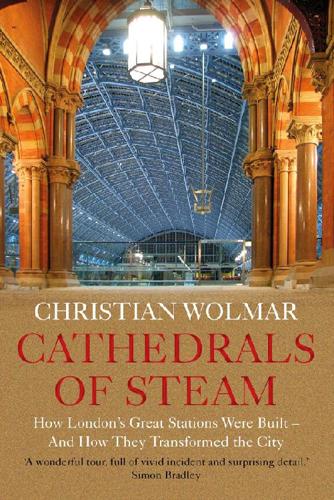
Cathedrals of Steam: How London’s Great Stations Were Built – and How They Transformed the City
by
Christian Wolmar
Published 5 Nov 2020
When leaving Euston station, which initially had just two platforms, one each for arrivals and departures, a group of strong men called ‘bankriders’ would push the loaded carriages to the ‘Messenger’, the name given to the winding cable, and fasten it to the train. Then, a blast of air was sent along a pneumatic tube which sounded a trumpet inside the engine house (the noise was described as a ‘melancholic mysterious moaning’). It soon became familiar to the residents of Camden near the Regent’s Canal as it was amplified by two tall chimneys that sat above the engine house that straddled the tracks. That was the signal to start hauling the ‘endless’ cable – in reality a tarred rope – which was just over two miles long.
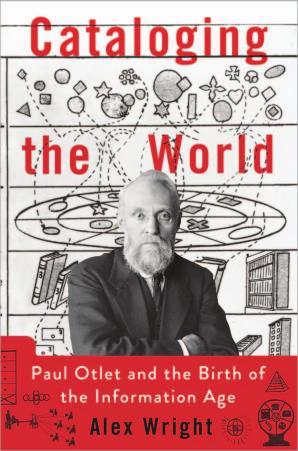
Cataloging the World: Paul Otlet and the Birth of the Information Age
by
Alex Wright
Published 6 Jun 2014
Electric lines fanned out across the city to government buildings, commercial establishments, and thousands of ordinary Parisian households—helping Paris live up Panoramic view of the Universal Exposition of 1900 (Vue panoramique de l’exposition universelle de 1900). Baylac, Lucien. Library of Congress Prints and Photographs Division. 64 B elle E po q u e to its reputation as the City of Lights. Under Baron Haussman, the city had modernized its formerly medieval street plan, while below ground a network of pneumatic tubes snaked along for more than 120 miles, delivering millions of paper messages throughout the city on any given day.4 Paris was becoming, as historian Rosalind Williams put it, a “unified system.”5 That system radiated outward as well as inward, as Paris cemented its position as a cultural and economic hub.

Intern: A Doctor's Initiation
by
Sandeep Jauhar
Published 26 Dec 2007
Nancy forced a smile and handed me a stack of sheets. “You’ll need these for rounds,” she said curtly. The CCU was a rectangle, with most of the rooms arrayed along a long wall running parallel to the East River. There was a central bay with a nursing station and a medication room. At the front entrance were a clerk’s desk and a pneumatic tube system for ferrying specimens to the laboratory in the basement. At least once an hour one could hear the hut-hut-hut of a test tube containing a blood sample being whisked away for analysis. Sleek and modern, constantly buzzing, the CCU occupied a world apart from the rest of the hospital, which by comparison was relatively staid.

The Stack: On Software and Sovereignty
by
Benjamin H. Bratton
Published 19 Feb 2016
See Martin Heidegger, “The Thing,” in William Lovitt, trans. and ed., The Question Concerning Technology and Other Essays (New York: Garland Publishing, 1977), and Bruno Latour, We Have Never Been Modern (Cambridge, MA: Harvard University Press, 1991). 20. And before this, the network city was already well understood. The Romans, and the informational city by French pneumatic tube engineers who largely perfected the point-to-point packet, switched distribution analog information units. By the 1960s, continental-scale computational network systems, such as the SAGE early warning system, suggested more comprehensive transformations of urban pathways and partitions according to information processing perspectives, especially in cinema and architecture.
…
The economies of scale that are possible by regularizing and extending itineraries might parallel those of regularizing and monetizing other kinds of social interaction online. Elon Musk's perhaps real and perhaps speculative Hypertube project, which would send humans whooshing up and down California inside what is essentially a giant pneumatic tube, is exemplary, as is the tendency for cities to strategize economic growth through the enhancement of their airports (now “aerotropoli”) ensuring their inhabitants easy access to the rest of the global urban grid.52 Implementing such systems is obviously very expensive in both time and treasure.

Higher: A Historic Race to the Sky and the Making of a City
by
Neal Bascomb
Published 2 Jan 2003
He learned how long he could drive rivets before his arms went numb and it was time to switch with the bucker-up. Holding the dolly bar on the other end was an easier job than managing the pneumatic hammer that weighed thirty-five pounds, drove a thousand blows per minute, and shook the steel for a good ten stories. The new guy learned how to avoid the snaking coils of pneumatic tubing under his feet, and why it was not such a good idea to drink at the local Irish bar past midnight the night before. Most of all, he learned to take care in bad weather. Said one riveter, it was “the most dangerous part of the work. We see quite a lot of the weather. When it rains, everything gets slippery.

Is the Internet Changing the Way You Think?: The Net's Impact on Our Minds and Future
by
John Brockman
Published 18 Jan 2011
Increasing Internet identity means increasing identity theft, and whatever I have encrypted, hackers will try to decode. So much so that governments and other organizations often restrict their most secure communications to older technologies, even sending scrolled messages in small capsules through pneumatic tubes. This, of course, fuels the suspicions of Internet conspiracy theorists. Looking at what have I’ve gained: I now hear from a greater range of different voices, discover new talents with something to say—niche writers, collectors, musicians, and artists. I have access to more books, journal articles, newspapers, TV programs, documentaries, and films.
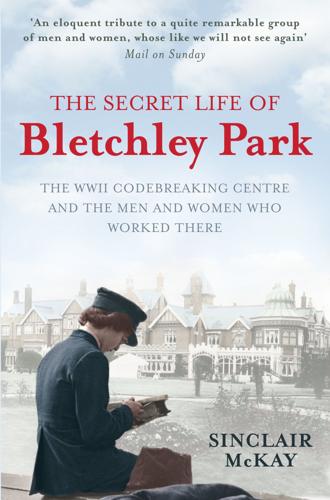
The Secret Life of Bletchley Park: The WWII Codebreaking Centre and the Men and Women Who Worked There
by
Sinclair McKay
Published 24 May 2010
In Block A, Josh Cooper’s Air Section got the first floor, while Frank Birch’s Naval Section was moved into the ground floor. There were more Blocks to follow, up to D. Block A was equipped – in one of those nice little touches that always seemed to bring an element of the quotidian into the Bletchley effort – with a pneumatic tube system previously used in John Lewis stores and employed at Bletchley for zipping messages on paper between rooms. It was a step up from the hatchway/tray/pulley arrangement that had previously been a feature of inter-hut communication. The pneumatic system was brought in by Hugh Alexander, who before the war had been Chief Scientist to the John Lewis chain.
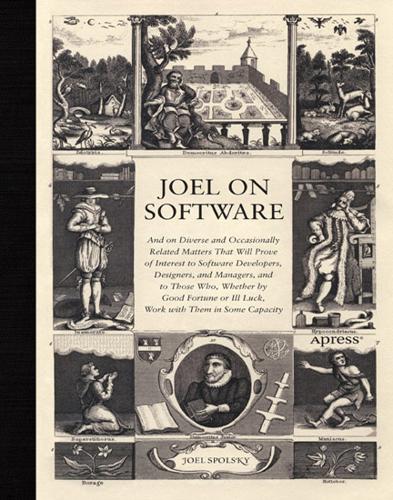
Joel on Software
by
Joel Spolsky
Published 1 Aug 2004
(Although in the future even common laborers will make enough money to take out ten, twenty, or even forty dollars each time they go to the bank!) Flying machines will whisk us in comfortable pressurized air from city to city. Perhaps you might even be served a simple hot meal, high above the clouds! The world's largest encyclopedia—bigger, indeed, than a school library—will be instantly available in homes by means of pneumatic tubes or perhaps electrical wires. A special telephotograph-machine will enable the spread of education throughout the world, giving even the poorest dustbin-cleaner an opportunity to better themselves by learning the classics, eliminating hunger and suffering. Oh, and C# will have anonymous methods, allowing the code associated with a delegate to be written in-line where the delegate is used, conveniently tying the code directly to the delegate instance.

How the Post Office Created America: A History
by
Winifred Gallagher
Published 7 Jan 2016
The institution was a monopoly, so it would be the only customer for the complex machines it needed. This fact had naturally discouraged manufacturers’ interest; it also helps explain why advances in postal tools had been relatively limited in the earlier twentieth century to things like electric postage meters and stamp cancelers, stamp vending machines, and pneumatic tubes— pipelines that sped urban letters underground. Little progress had been made regarding the post’s major problem of mail sorting. Summerfield did his best to end this institutional stasis by enthusiastically experimenting with mechanizing the post. Previously, the department’s own engineering staff had designed prototypes for the necessary machines, then contracted with outside companies to have the equipment built.

High-Frequency Trading: A Practical Guide to Algorithmic Strategies and Trading Systems
by
Irene Aldridge
Published 1 Dec 2009
Advanced technical analysts may look at security prices in conjunction with current market events or general market conditions to obtain a fuller idea of where the prices may be moving next. Technical analysis prospered through the first half of the 20th century, when trading technology was in its telegraph and pneumatic-tube stages and the trading complexity of major securities was considerably lower than it is today. The inability to transmit information quickly limited the number of shares that changed hands, curtailed the pace at which information was incorporated into prices, and allowed charts to display latent supply and demand of securities.

The Deep Learning Revolution (The MIT Press)
by
Terrence J. Sejnowski
Published 27 Sep 2018
Brains evolved through a long process of progressive adaptation to the environment; nature could not afford to start with a clean slate but had to make do by modifying parts and pieces while keeping the current species viable. In his book Evolving Brains,5 John Allman illustrates progressive evolution on an urban human scale by recounting a visit to the boiler room of an old power plant in San Diego, where he noticed an intricate array of small pneumatic tubes next to a bank of vacuum tubes, alongside several generations of computer control systems. Because the plant was needed for continuous power output, it could not be shut down and retrofitted with each new technology, so the old control systems were left in place and the new ones integrated into them.
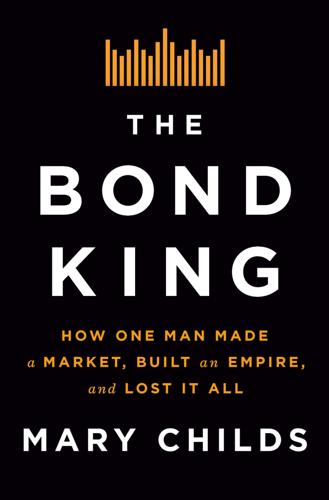
The Bond King: How One Man Made a Market, Built an Empire, and Lost It All
by
Mary Childs
Published 15 Mar 2022
Technically the head of operations, Fisher made the place run. She was in charge of HR and payroll and technology, and for a time, she also invested short-term cash, little spare bits of money that didn’t have a permanent home yet, getting yields of 20 percent overnight. She also orchestrated the company’s move to a new office, adding pneumatic tubes from the trade floor to the back office for processing, so her employees wouldn’t have to venture into the hot zone of the trade floor and risk getting scorched. Her primary job was to make sure there were no mistakes, no trade errors, no numbers transposed or trade tickets lost. She bent the inefficient banking system into the shape that worked best for Pimco, badgering all the custodian banks into getting fax machines in the 1980s to improve accuracy, and further improving it by pitting them against one another for Pimco’s business.
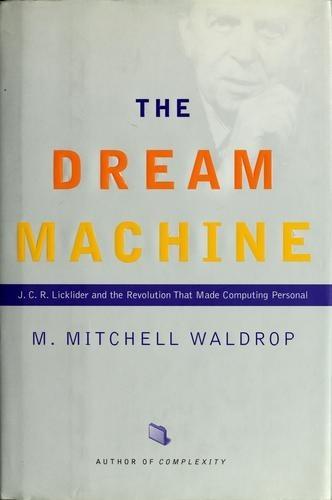
The Dream Machine: J.C.R. Licklider and the Revolution That Made Computing Personal
by
M. Mitchell Waldrop
Published 14 Apr 2001
The Multinet would permeate society, Lick wrote, thus achieving the old MIT dream of an information utility, as updated for the decentralized network age: "Many people work at home, interacting with coworkers and clients through the Multinet, and many business offices (and some classrooms) are little more than organized interconnections of such home workers and their computers. People shop through the Multinet, using its cable television and electronic funds transfer functions, and a few receive delivery of small items through adjacent pneumatic tube networks. . . . Routine shopping and appointment scheduling are generally handled by private-secretary-like pro- grams called OLIVERs which know their masters' needs. Indeed, the Multinet handles scheduling of almost everything schedulable. For example, it eliminates waiting to be seated at restaurants."
…
Instead, Lick pre- dicted, its mode of operation would be "one featuring cooperation, sharing, meetings of minds across space and time in a context of responsive programs and readily available information."2 The Multinet would be the worldwide em- bodiment of equality, community, and freedom. If that is, the Multinet ever came to be. That concern seems a bit mystifying nowadays, since Lick's vision of the Multinet was only a slight exaggeration of what the Internet has in fact become in the new millennium (except for a few items such as the pneumatic-tube net- work, which Lick may have meant as a joke anyway; his OLIVER, of course, would now be called an agent). It seems even more mystifying when you con- sider that from a purely technological point of view, all the essential compo- nents of the Internet were already in place by then: personal computers, local-area networking, packet switching, internetworking protocols-everything.
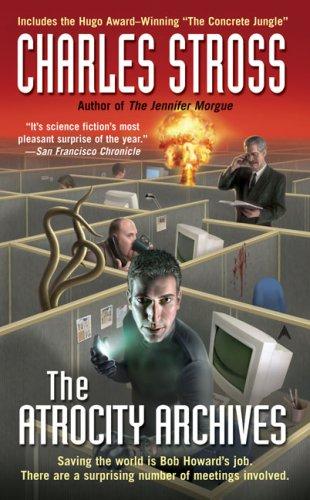
Atrocity Archives
by
Stross, Charles
Published 13 Jan 2004
You really don't want to be standing at ground zero when that happens. Which is why we have the Laundry . . . I SLINK BACK TO MY OFFICE VIA THE COFFEE maker, from which I remove a mug full of a vile and turgid brew that coats my back teeth in slimy grit. There are three secret memos waiting in the locked pneumatic tube, one of which is about abuse of government-issue toothpaste. There are a hundred and thirty-two email messages waiting for me to read them. And on the other side of the building there's a broken Beowulf cluster that's waiting for me to install a new ethernet hub and bring it back online to rejoin our gang of cryptocrackers.

Arriving Today: From Factory to Front Door -- Why Everything Has Changed About How and What We Buy
by
Christopher Mims
Published 13 Sep 2021
But the robot I’ve come for, and the systems that support it, are, like the automated loom or the steam drill, a singular example of the kind of technological change that drives the economic “gale of creative destruction” first described by economist Joseph Schumpeter in 1942. In the center of this warehouse, surrounded by concentric rings of automation, the robot I’ve come for doesn’t look like much: just your run of the mill industrial robot arm, pneumatic tubes snaking down its length, ending in a suction device for grabbing items. Darin fires it up, and the hiss and pop of its air-powered system for grabbing packages adds to what was already a loud din. On one side of the robot arm, the same totes filled by the workers we observed earlier travel down an inclined conveyor.

The Big Roads: The Untold Story of the Engineers, Visionaries, and Trailblazers Who Created the American Superhighways
by
Earl Swift
Published 8 Jun 2011
To measure traffic and its characteristics, the bureau used an assortment of counting machines, some of them permanent, others portable, several of which its engineers invented. One, installed nearly five hundred times over, used photoelectric cells and light beams; others used electric strips or pneumatic tubes laid across the road. The level of detail these machines produced bordered on the microscopic. In studying the physics of passing on a two-lane road, the tests measured the speeds of the passing and passed vehicles before, during, and after the pass; the specific points at which any changes in speed occurred; the distance the passing vehicle traveled in the oncoming lane; the time and distance it straddled the center line; and the actions of both vehicles in response to traffic approaching from the other direction.
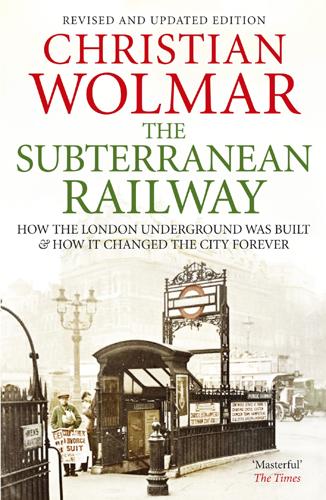
The Subterranean Railway: How the London Underground Was Built and How It Changed the City Forever
by
Christian Wolmar
Published 30 Sep 2009
Even Pearson aficionados did not always have faith that the idea was truly viable. Henry Mayhew, the writer and campaigner, discussed ‘our joint schemes’ and ‘often smiled at the earnestness with which he advocated his project for girding London round with one long, drain-like tunnel and sending the people like so many parcels in a pneumatic tube’.17 Mayhew pointed to the difficulties Pearson faced in trying to persuade his contemporaries of the viability of the idea. Writing after the opening of the first section of the Metropolitan, Mayhew recalled how Pearson had to overcome all kinds of superstition and pseudo-scientific mumbo-jumbo: Such a scheme, though it has proved one of the most successful of modern times, met with the same difficulties and oppositions that every new project has to encounter.

Genghis Khan and the Making of the Modern World
by
Jack Weatherford
Published 21 Mar 2005
A large tree sculpted of silver and other precious metals rose up from the middle of his courtyard and loomed over his palace, with the branches of the tree extending into the building and along the rafters. Silver fruit hung from the limbs, and it had four golden serpents braided around the trunk. At the top of the tree, rose a triumphant angel, also cast in silver, holding a trumpet at his side. An intricate series of pneumatic tubes inside the tree allowed unseen servants to blow into them and manipulate them to produce what seemed to be acts of magic. When the khan wanted to summon drinks for his guests, the mechanical angel raised the trumpet to his lips and sounded the horn, whereupon the mouths of the serpents began to gush out a fountain of alcoholic beverages into large silver basins arranged at the base of the tree.

The Bookshop: A History of the American Bookstore
by
Evan Friss
Published 5 Aug 2024
The interior was befitting of a Paris store. There were separate sections for jewelry, lace, linens, umbrellas, furniture, pottery, hats, gowns, perfumes, shoes, and glassware. The building had its own post office, ticket counter, reading room, writing room, rocking chair–filled “silence room,” 68 elevators, 127,000 feet of pneumatic tubing, thousands of employees, and 700 horses standing by for delivery. In all, the retail square footage measured sixty-seven acres. For the most part, books were still expensive and associated with the well educated and the upper classes. In their 1920s study of “Middletown” (Muncie, Indiana), sociologists found that 76 percent of working-class families purchased no books apart from those required for school.
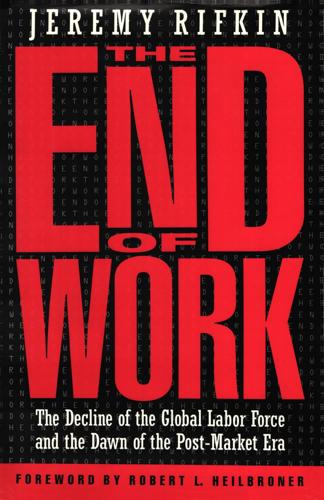
The End of Work
by
Jeremy Rifkin
Published 28 Dec 1994
Virtually all of their accounts include descriptions of the many new labor- and time-saving machines that will free people for a life of increasing leisure. Of course, all are powered by the miracle of electricity. They correctly predicted electric clothes washers and dryers, vacuum cleaners, air conditioners, refrigerators, garbage disposals, even electric razors. Underground pneumatic tubes would connect factories, wholesalers, distributors, and customers and provide a twenty-four-hour pipeline for shipping goods to every household and to the far corners of the megalopolises. The pneumatic underground, says one citizen of utopia, is "like a gigantic mill, into the hopper of which goods are being constantly poured by the trainload and shipload, to issue at the other end in packages of pounds and ounces, yards and inches, pints and gallons, corresponding to the infinitely complex personal needs of half a million people."12 All of these inventions, claimed the new technological utopians, would mean freedom from "all of the annoyances" of housekeeping and work.

Elon Musk: Tesla, SpaceX, and the Quest for a Fantastic Future
by
Ashlee Vance
Published 18 May 2015
There’s been this long wind-down of the space program, and people have abandoned the optimistic visions of the future that we had in the early 1970s. SpaceX shows there is a way toward bringing back that future. There’s great value in what Elon is doing.” The true believers came out in full force in August 2013 when Musk unveiled something called the Hyperloop. Billed as a new mode of transportation, this machine was a large-scale pneumatic tube like the ones used to send mail around offices. Musk proposed linking cities like Los Angeles and San Francisco via an elevated version of this kind of tube that would transport people and cars in pods. Similar ideas had been proposed before, but Musk’s creation had some unique elements. He called for the tube to run under low pressure and for the pods to float on a bed of air produced by skis at their base.

Rainbows End
by
Vernor Vinge
Published 1 May 2006
As they walked farther on, things became less familiar. Glassy tubes ran along the walls. Robert saw signs printed on the walls, cryptic physical backup for nodes that wouldn’t respond to his computer box. Thunk. Something white and the size of a volleyball whizzed by in one tube. Thunk, thunk. Similar traffic in the opposite direction. Pneumatic tubes had once been a sign of the brave new world. When Robert was a child, he’d seen such things in dying department stores. “Why the pneumo tubes, Tommie?” “Well, this is where theory meets reality. Proteomics, genomics, regulomics — you name the ‘omic,’ and it’s here. These labs are huge. The local data traffic is a million times what you have on a public trunk, with the latencies of a home network.

A Half-Built Garden
by
Ruthanna Emrys
Published 25 Jul 2022
But we’d been passing more information than usual these past few hours—and rich data too, not just text. “What about you lot?” “The federal network is fine,” said Goldsmith. “It should also be pointed out,” said Bakkalian, “that the federal network uses a completely different protocol, and has the bandwidth of a clogged pneumatic tube.” “Fine, like I said. Same slow and glitchy as always.” “Are you having trouble with your communications?” asked Rhamnetin. “We’re not picking up any change.” “If you’re still focused on the radio and television broadcasts, you’re missing ninety percent of what we say,” said Goldsmith. Of course the encrypted dandelion network signals weren’t made to be picked up by anyone outside their specific protocols.

Cooked: A Natural History of Transformation
by
Michael Pollan
Published 22 Apr 2013
He need not have worried. Only another miller could have toured his plant and understood the first thing about what was going on deep inside all those freshly painted tan steel contraptions. Since the millstones and rollers are encased in steel and the flour moves between them in sealed pneumatic tubes, just about every step in the milling process takes place out of sight. What seemed distinctive about Vanderliet’s operation is that the grain went through a multistep milling process that partakes of both traditional and modern technologies. So, after being milled whole on stone, the grain is passed through a roller mill and a hammer mill.

Business Adventures: Twelve Classic Tales From the World of Wall Street
by
John Brooks
Published 6 Jul 2014
The lateness of the tape meant that the machine was simply unable to keep abreast of what was going on, so fast were trades being made. Normally, when a transaction is completed on the floor of the Exchange, at 11 Wall Street, an Exchange employee writes the details on a slip of paper and sends it by pneumatic tube to a room on the fifth floor of the building, where one of a staff of girls types it into the ticker machine for transmission. A lapse of two or three minutes between a floor transaction and its appearance on the tape is normal, therefore, and is not considered by the Stock Exchange to be “lateness;” that word, in the language of the Exchange, is used only to describe any additional lapse between the time a sales slip arrives on the fifth floor and the time the hard-pressed ticker is able to accommodate it.

Capitalism in America: A History
by
Adrian Wooldridge
and
Alan Greenspan
Published 15 Oct 2018
In 1906, Sears and his business partner, Alvah Roebuck, took the company public and opened a $5 million mail-order plant in Chicago, the largest business building in the world, featuring an assembly line for customer orders. “Miles of railroad tracks run lengthwise through and around this building for the receiving, moving and forwarding of merchandise,” boasted the Sears catalogue. “Elevators, mechanical conveyors, endless chains, moving sidewalks, gravity chutes, apparatus and conveyors, pneumatic tubes and every known mechanical appliance for reducing labor, for the working out of economy and dispatch are to be utilized here in our great works.” One of the first people to visit this industrial marvel was the ever-curious Henry Ford. THE URGE TO MERGE The corporations that spread across the American business world, from transport to production to retailing, all had one thing in common, the quest for size.
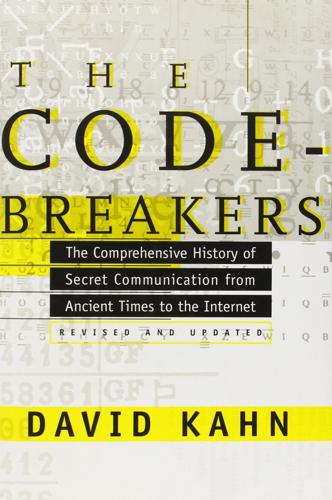
The Codebreakers: The Comprehensive History of Secret Communication From Ancient Times to the Internet
by
David Kahn
Published 1 Feb 1963
Despite the gruesome aspects of the job, Miller succeeded nearly every time in finding the now familiar iron box, and from one of the 25 U-boats that he explored—no Englishman was more familiar with their interior than he—he recovered the badly needed new German naval code. After the war, he was decorated at Buckingham Palace by the king. Miller’s find helped the cryptanalysts in reading the increasing volume of enemy messages. Room 40 was now approaching the height of its power. Intercepts poured in through the pneumatic tube so fast that at times the discharge of its small containers sounded like a machine gun. (After the war it was estimated that from October, 1914, to February, 1919, Room 40 had intercepted and solved 15,000 German secret communications.) Work went on round the clock on the naval messages, even during the Zeppelin bombings, when the lights were dimmed behind the close-fitting dark blinds.
…
In addition to dozens of offices and basement facilities for computers, the structure encloses a cafeteria accommodating 1,400 and an auditorium seating 500, eight snack bars, a post exchange, a dispensary with X-ray and operating rooms and dental chairs, a shoe-repair and clothes-cleaning shop, a barber shop, and a branch of the State Bank of Laurel. A system of “security conveyor belts” runs through the basement, carrying trays of documents to eight substations. A German pneumatic-tube system can whisk up to 800 containers an hour at 75 feet per second to interoffice destinations selected by a dial at each station. The building is fully air-conditioned. It has a public-address system. It is said to have more electric wiring than any building in the world. Its institutional, characterless offices, filled with metal desks, partitions, and lockable file cabinets, are the black chambers of today.
…
Jellicoe does not mention the Admiralty message to him in his The Grand Fleet 1914-1916 (London: Cassell, 1919). 273 gamma epsilon and gamma u: James, letters, October 8, 1962, February 4, 1964. 273 German suspicion: Churchill, III, 113. 273 change of code: James, 115. 273 L-32: James, 116. 273 Miller: “A War Secret,” The Saturday Evening Post, CCII (October 23, 1926), 44, 46, 74. 274 pneumatic tube: James, 129; Ewing, 182; James, letter, September 12, 1962. 274 15,000: W. R. Hall, affidavit of March 28, 1932, Mixed Claims Commission, U.S.A. on behalf of Lehigh Valley Rr. et al. against Germany, Docket 8103, Exhibit 920. Reprinted in Friedman and Mendelsohn, 30-32. Cited henceforth as “Hall affidavit.”

The Relentless Revolution: A History of Capitalism
by
Joyce Appleby
Published 22 Dec 2009
Already geared toward consumption, the American economy boomed when millions of families bought big-ticket items like cars, refrigerators, washing machines, and dryers. A change in lending and borrowing made this great spending spree possible. Earlier, department stores and upscale groceries had created charge accounts. One of the conspicuous features of department store interiors was the pneumatic tubing that carried charge slips from every department up to the credit office, where they were sorted for monthly bills. So credit was not new to Americans, but it had never before been crafted into one of the pillars of prosperity. After the war, banks, retailers, manufacturers, lenders, collection agencies, and state and federal officials took the haphazard local lending industry of America and turned it into a coherent national system.
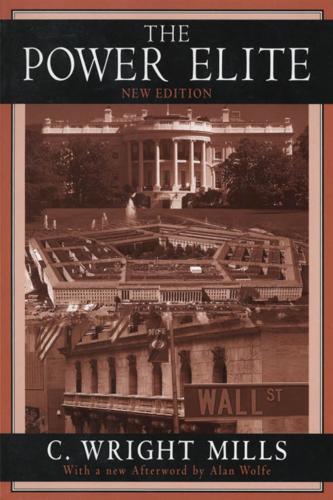
The Power Elite
by
C. Wright Mills
and
Alan Wolfe
Published 1 Jan 1956
The most dramatic symbol of the scale and shape of the new military edifice is the Pentagon.10 This concrete and limestone maze contains the organized brain of the American means of violence. The world’s largest office building, the United States Capitol would fit neatly into any one of its five segments. Three football fields would reach only the length of one of its five outer walls. Its seventeen and a half miles of corridor, 40,000-phone switchboards, fifteen miles of pneumatic tubing, 2,100 intercoms, connect with one another and with the world, the 31,300 Pentagonians. Prowled by 170 security officers, served by 1,000 men and women, it has four full-time workers doing nothing but replacing light bulbs, and another four watching the master panel which synchronizes its 4,000 clocks.
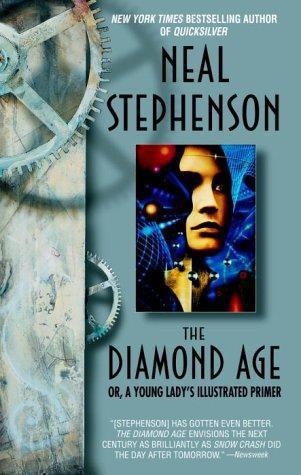
The Diamond Age
by
Neal Stephenson
Published 2 May 2000
Along the way, she proved what was a foregone conclusion, namely, that the system for processing this language was essentially a more complex version of the mechanical organ, hence a Turing machine in essence. Next was a castle divided into many small rooms, with a system for passing messages between rooms through a pneumatic tube. In each room was a group of people who responded to the messages by following certain rules laid out in books, which usually entailed sending more messages to other rooms. After familiarizing herself with some of these rule-books and establishing that the castle was another Turing machine, Princess Nell fixed a problem in the message-delivery system that had been created by the vexatious dark knight, collected another ducal coronet, and moved on to castle number six.

In the Age of the Smart Machine
by
Shoshana Zuboff
Published 14 Apr 1988
s7 Leffingwell recognized that the growth in the size of the office was a major force that would increase the coordinative demands on the office worker, and he saw his own principles of organization, together with the appropriate use of mechanical devices, as the chief bulwark The White-Collar Body in History 119 against the threat of inefficiency and chaos: "A larger volume of busi- ness requires a large force of clerks to handle it; . . . this. . . makes the necessary communication between them more difficult, and there will be much walking back and forth between them for this purpose, unless some means is adopted to prevent it and save the time thereby expended. . . . Routine. . . tends to reduce communication. ,,58 Layout, standardization of methods, a well-organized messenger service, desk correspondence distributors, reliance on written instructions, delivery bags, pneumatic tubes, elevators, automatic conveyors, belt conveyors, cables, telautographs, telephones, phonographs, buzzers, bells, and horns-these were just some of the means Leffingwell advocated in order to insulate the clerk from extensive communicative demands. These efforts illustrate how scientific management in the office tried to provoke a discontinuity between the new clerical activity and the tra- ditional clerical work that had preceded it.

How to Hide an Empire: A History of the Greater United States
by
Daniel Immerwahr
Published 19 Feb 2019
One of the blockbusters of the age was a work of science fiction, Looking Backward (1888) by Edward Bellamy. It imagined a man falling asleep in Boston in 1887 and awakening in the year 2000 to a luminously bright future, a future where everything worked. Bellamy’s prophecies were exhilarating. Consumers, he predicted, would no longer buy goods in stores. They’d place orders into pneumatic tubes, using what he called “credit cards,” and their purchases would come whooshing back via the same tubes. For a small fee, they could even have music piped into their homes as if it were water. “It appears to me,” Bellamy’s time traveler marveled in a retrospectively hilarious passage, “that if we could have devised an arrangement for providing everybody with music in their homes, perfect in quality, unlimited in quantity, suited to every mood, and beginning and ceasing at will, we should have considered the limits of human felicity already attained, and ceased to strive for further improvements.”
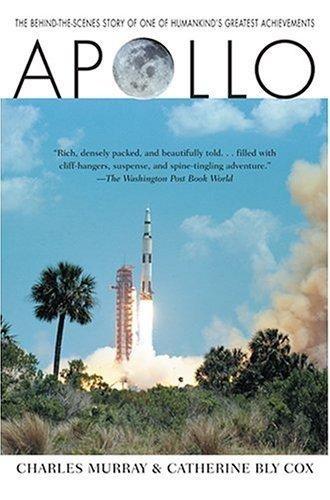
Apollo
by
Charles Murray
and
Catherine Bly Cox
Published 1 Jan 1989
During one of the later Apollo missions, Jerry Bostick was in SPAN, working the Flight Dynamics position. SPAN, like the MOCR, always had visitors, and one of them, an unassuming gentleman who looked, someone once said, like a carving of a Black Forest elf, was sitting between Bostick and the pneumatic tube (P-tube) that Bostick used for sending messages to the MOCR and back rooms. Finally Bostick said. “Look, I don’t know who the hell you are or what you’re doing here, but you could make yourself useful and help get the messages out.” And so the man took off his coat and sat there the rest of the shift stuffing messages into the P-tube at Bostick’s direction.

Console Wars: Sega, Nintendo, and the Battle That Defined a Generation
by
Blake J. Harris
Published 12 May 2014
But that Hollywood-esque supersecret teaser mentality changed on October 8, with the beginning of Sega’s Sonic 2 Store Tour. Since then, 345 retail locations (and three air force bases) in sixteen markets gave customers an exclusive opportunity to play the game. TOM KALINSKE “To watch Sonic kick into overdrive, or be hurled through a pneumatic tube at what seems like the speed of sound, is really amazing.” —Associated Press “What’s faster than a speeding bullet, stronger than a locomotive and able to leap tall buildings with a single bound? Well, him too, but we’re talking about Sonic The Hedgehog.” —GamePro “Not enough adjectives describe this game. . . .
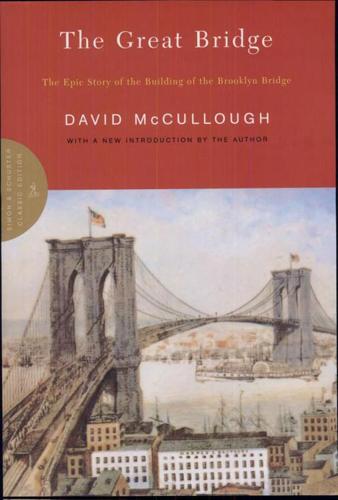
The Great Bridge: The Epic Story of the Building of the Brooklyn Bridge
by
David McCullough
Published 1 Jun 2001
So any alternative means of rapid transportation was bound to be either killed off by Tweed or cost its proponents dearly in Tammany blackmail. Beach recognized all this and decided therefore to do what he wanted secretly. In 1868 he managed to get past Tweed an inconsequential-appearing bill permitting him to establish an experimental pneumatic tube for moving mail. Then, toward the end of the year, with no more legal right than that, he went to work. He had rented Devlin’s clothing store at Broadway and Murray, and there, in the cellar, he began digging a tunnel, nine feet in diameter, that was to run a block uptown, to Warren Street, directly beneath Broadway.
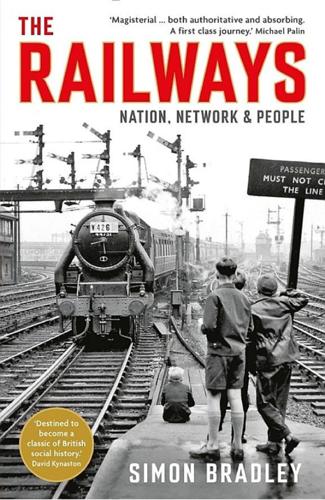
The Railways: Nation, Network and People
by
Simon Bradley
Published 23 Sep 2015
Here the unaccompanied wagons glided along their appointed paths with eerie steadiness, amid the strange nagging sounds made when the dash pots engaged with their wheels. Innovative systems of communication were also developed. Thornton depended on the compilation of ‘cut cards’ at the point where incoming trains entered the yard. Duplicate copies of these were shot through pneumatic tubes to the inspector’s office and the control tower, which was effectively a specialised signal box from which the correct sequence of changes to the points could be set. At Tinsley, the cut cards and pneumatic communication tubes were set aside in favour of a Telex-like system of electronic signals for encoding on punched tape at the control tower.

Presidents of War
by
Michael Beschloss
Published 8 Oct 2018
CHAPTER TEN “The World Is on Fire” On Wednesday morning, January 17, 1917, mired in the third year of its Great War against Germany and the other Central Powers, Great Britain was almost desperate for the United States to come to its aid.*1 In London’s Whitehall neighborhood, Rear Admiral William Reginald Hall, the director of British naval intelligence, looked out his office window at the falling snow, while rolled-up messages shot from pneumatic tubes into wire baskets. In came one of Hall’s best codebreakers, Nigel de Grey, perspiring with excitement. De Grey asked the Admiral, “Do you want to bring America into the war?…I’ve got something here which—well, it’s a rather astonishing message which might do the trick, if we could use it.” De Grey produced his handwritten version of a partially decoded German telegram: “It isn’t very clear, I’m afraid, but I’m sure I’ve got most of the important points right.”

The Rise and Fall of American Growth: The U.S. Standard of Living Since the Civil War (The Princeton Economic History of the Western World)
by
Robert J. Gordon
Published 12 Jan 2016
Long before electrification entered the working-class American home, electricity was adopted for lighting and other functions in the department stores. Electric elevators, electric light, and electric fans encouraged customers to visit the upper floors, helping management improve use of space and personnel. Electricity-powered pneumatic tube systems allowed centralized cashiers to provide receipts and make change. During this period, stores operated on a cash-only policy that allowed them to pay their suppliers rapidly, and they made most of their profits on discounts from suppliers.81 These temples of merchandise became the prime sightseeing destinations of their cities, not least in the case of Marshall Field’s landmark State Street building, completed in 1907, with its Tiffany glass ceiling, both the first and the largest ceiling built of Tiffany’s unique iridescent art glass—containing 1.6 million pieces.
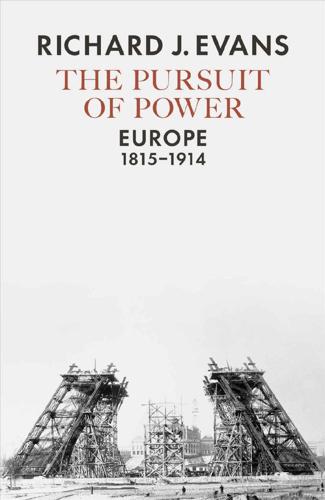
The Pursuit of Power: Europe, 1815-1914
by
Richard J. Evans
Published 31 Aug 2016
By the early twentieth century the Párisi department store in Budapest, on the prestigious Andrássy Avenue, close to the Opera House, was selling goods on six floors of a magnificent building whose vast galleries, adorned with specially commissioned paintings and decorations, offered a huge range of goods at all prices, advertised in plate-glass windows along the frontage. The Samaritaine in Paris, constructed in 1910, had steam heating ducts, a pneumatic tube system for messages, motorized conveyor belts to deliver packages, and electrically powered awnings on the exterior to protect the windows from the sun. Yet all these new forms of retailing did not really account for more than 15 per cent of turnover in the sector. The small shop, the butcher, baker, grocer, greengrocer, dairy and so on, continued to grow in numbers to meet the ever-increasing demand.
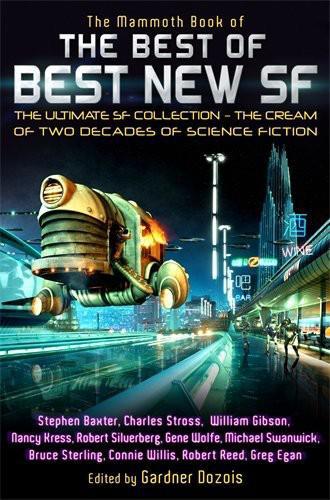
The Best of Best New SF
by
Gardner R. Dozois
Published 1 Jan 2005
Whirling, I scanned the dark glass, but there was nothing there, no moths, no wings, just the lights of the decaying city flung randomly across the blackness and the sound, faint and very far away, of a siren wailing out somebody else’s disaster. I shivered. Putting on a sweater and turning up the heat made me no warmer. Then the mail slot chimed softly and I turned in time to see the letter fall from the pneumatic tube from the lobby, the apartment house sticker clearly visible, assuring me that it had been processed and found free of both poison and explosives. Also visible was the envelope’s logo: INSTITUTE OF THE BIOLOGICAL HOPE, all the O’s radiant golden suns. But Devrie never wrote paper mail. She preferred the mailnet.

Empire of Things: How We Became a World of Consumers, From the Fifteenth Century to the Twenty-First
by
Frank Trentmann
Published 1 Dec 2015
Shops added covered arcades that extended their displays into the street. It was hard to tell where commercial space ended and public space began. Once inside, the pull continued. At Harrod’s, a ‘moving staircase’ started rolling in 1898, transporting up to 4,000 customers per hour.58 Conveyer belts transported merchandise. Messages flew through pneumatic tubes. Rapid turnover ruled. ‘Sales’ had existed for a century or more. The department store turned them into seasonal rituals. Muir and Mirrielees held sales on gloves in March, perfume in April and carpets in August. All stores had ‘white weeks’, mostly in January, as well as ‘special price’ or ‘95-pfennig’ weeks.

The Rough Guide to New Zealand: Travel Guide eBook
by
Rough Guides
Published 1 Jan 2024
Inside the old Clock Tower building at the Arts Centre, this coffeeshop pays homage to the chemistry experiments that once took place here (Rutherford’s Den is next door), featuring wooden tables and cosy nooks, plus outdoor seating and a selection of delicious cakes, pastries and light meals. $ C1 Espresso 185 High St; www.c1espresso.co.nz. Fab licensed café in the grand 1930 former High St post office with a coffee roaster in the old vault. Get a potent caffeine fix; breakfast on corn, kale and coriander fritters; and return later for its trio of sliders delivered by pneumatic tube. $$ Casa Publica 180 Armagh St, at New Regent St; www.casapublica.co.nz. Hip Latin American-themed restaurant, which also offers over 160 types of rum and live music in the evenings (smooth soul and jazz Mon; 1980s Sat; live Latin guitar Sun). The varied menu features dishes inspired by Peru (ceviche), Mexico (tacos) and Brazil (feijoada stews and meaty espetadas), plus Cuban sandwiches and grilled corn. $$ Curator’s House 7 Rolleston Ave; www.curatorshouse.co.nz.